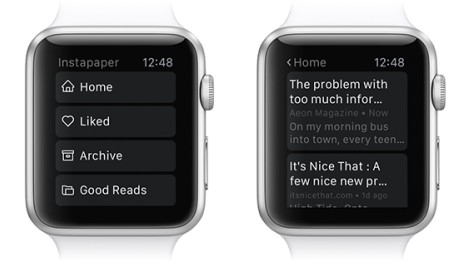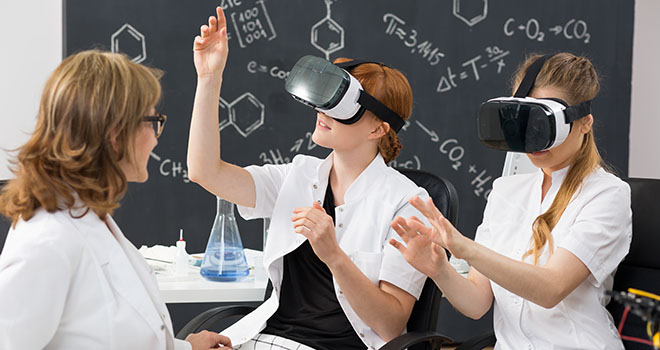Wearable tech has a big role in creating the classroom of tomorrow. In fact, according to Research and Markets, adoption of wearable technology in schools will grow by 46% per year over the next five years.
VR
Virtual reality has opened endless doors to many different industries, and also to the education. VR has changed the idea of the classroom, from the way we interact with teachers and colleagues.
Here are some examples of VR studies undertaken:
- Geography education: Minocha, Tilling and Tudor (2018) used virtual reality to take students on a virtual field trip to the great barrier reef to explore coral bleaching.
- History education: Fabola & Miller (2016) used VR headsets so students could explore what St Andrew’s cathedral looked like in the 14th
- Astronomy: Hussein & Natterdal (2015) used VR headsets so students could explore planets in the solar systems
Smart Watches
Before the days of the internet, school meant you had to drag a bulk of thick, heavy books wherever you went. With Instapaper on Apple Watch, you can access as many articles as you want and convert them from text to speech by connecting to your iPhone.
Your smartwatch acts as a controller, allowing you to play, pause, fast forward, rewind scrolling articles and save/archive with a longpress. What’s more, teachers have the option to assign articles to pupils, making the app a valuable asset to the modern-day classroom.

Facial Recognition
Facial recognition is already used in wearable tech education to save teachers time and make students feel welcome and included. The next generations of AR Glasses will let lecturers – with hundreds of students – to recognise them, see their grades, and call them by their names.
It all happens thanks to the built-in facial recognition feature, which connects to the school database of photo ID’s to recognise the student’s face, and to the school’s grades database to provide extensive info to the teacher.
No matter if there are 20 or 2000 people in the room, teachers will always know the name of who wants to ask a question while surveying their profile, as approved by the student at the enrollment time.
AI Translation Chatbots
Duolingo is already the world leader in terms of language learning apps (for better or for worse), and they seem to be leading the charge with integrated AI bots to provide learners with opportunities to practice.
Duolingo Bots are are a series of characters that provide learners with the chance to practice actually using their language skills, as opposed to simply dealing with often surreal automated learning material.
As wearable technology evolves and new solutions are being developed, students and teachers all over will no longer face barriers when it comes to knowledge.
Written by: Heather Turnbull






